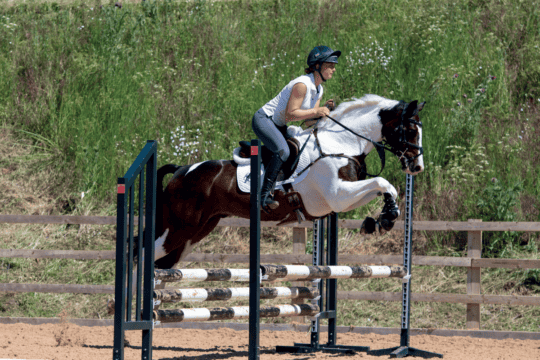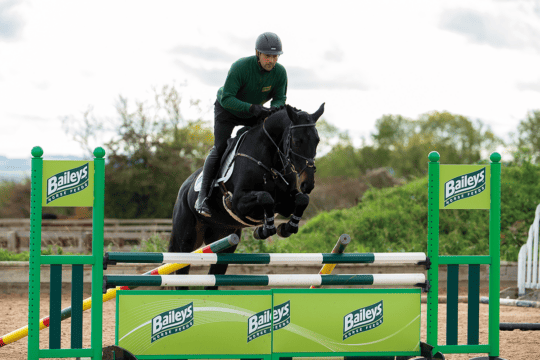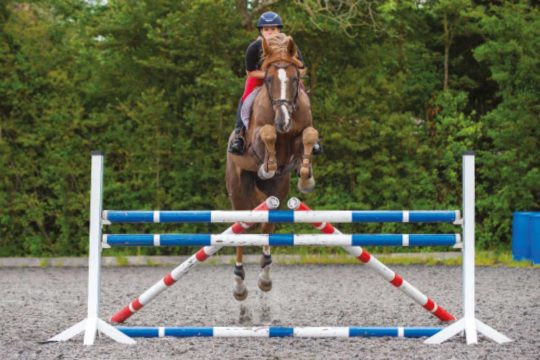-
Riding Schooling and Training
-
Health and Veterinary
-
Management
-
Mind Matters
-
Buying and Selling
-
Insurance Advice
FAQs
Do you ever feel a little unsure when you’re trying to work out distances between your poles? Follow Horse&Rider’s guide to help you get started
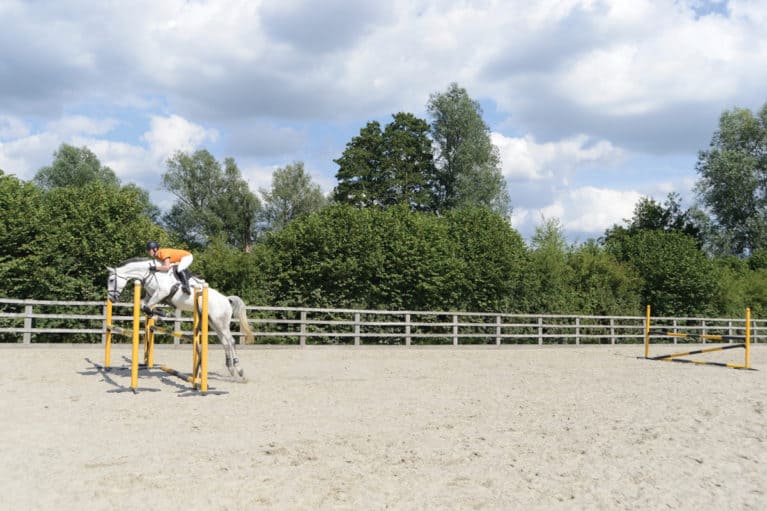
When you go to a competition, the distances will be measured for you, but when you’re practising at home, you will have to work these out yourself. The distances depend on…
- the size of the fences
- the length of your horse’s stride
- your horse’s education level
- your ability to establish and maintain a good canter
Top tips
- to begin with, use a measuring tape or wheel when you lay out your poles, but get to know how many of your strides equate to the same distance to make it easier in the future
- it’s better to make your distances a bit too long than too short when you’re trying to find your horse’s ideal distance
- look at and feel how your horse is coping with the distance each time you change it and learn how he feels when the distance is right
- as fences are raised, you’ll need to adjust the distances accordingly
- when you’re practising walk, trot or canter poles, always use an odd number of poles
These distances are for horses 15.2hh and over. If your horse is smaller, it’s likely that you’ll need to adjust them further.
TOP TIP Cut out this page and keep it at the yard, or take a picture of the distance tables on your phone so that you will always have them handy until you’ve learnt what’s best for your horse.
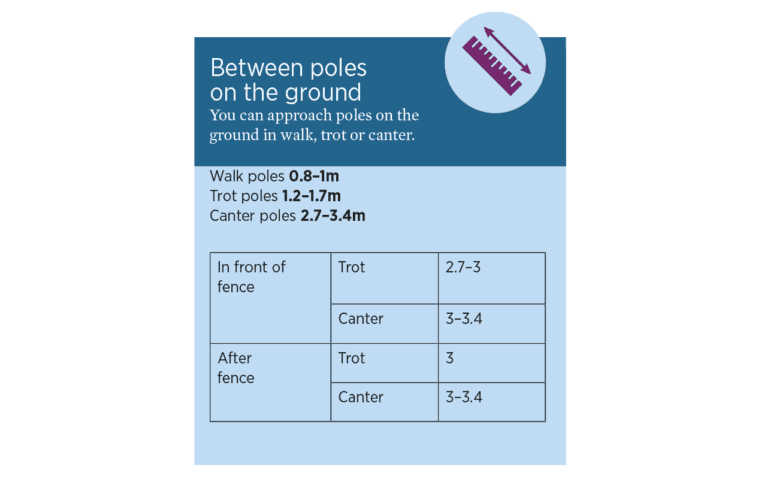
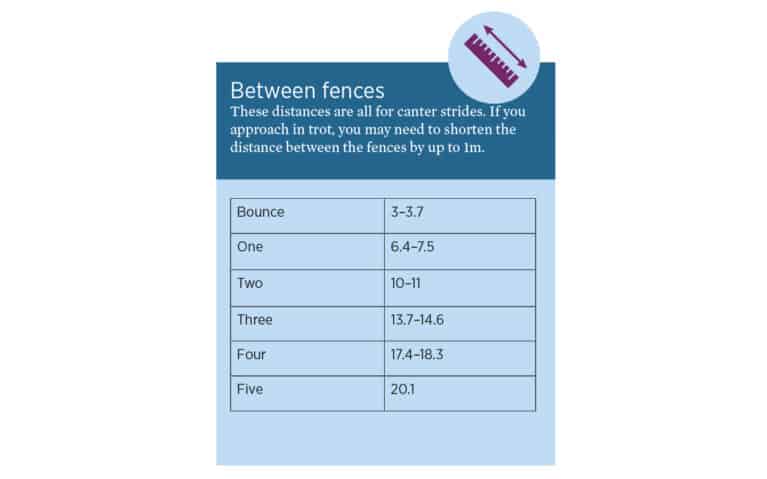
If you’re going to compete, you need to make sure your horse can make the distances that will be set out at the show because these are standard distances, not individually tailored to your horse’s size.




